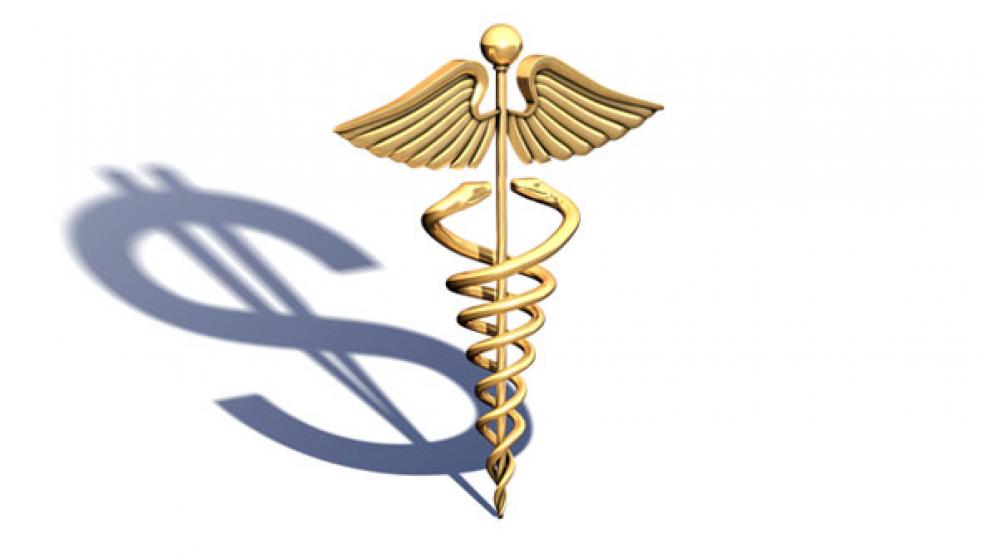Savvy consumers know the drill. Toyota takes a high-end Camry, slaps a Lexus nameplate adds bells, whistles and leather seats, and charges customers $10,000 more.
Nobody cares when people spend their own money for the illusion of higher quality. But when it comes to Medicare, where it is everybody’s money and overpriced technologies are a significant factor undermining the senior citizen health care program’s long-term financial viability, it is no longer acceptable.
Two researchers with past experience setting payment policy at the Centers for Medicare and Medicaid Services say the time has come to rip the nameplate off new and higher-priced medical technologies that do not deliver better outcomes than older methods of care. They have come up with an alternative scheme for setting prices at CMS, where the time-worn method of adding a profit to self-reported industry costs to set prices dates from World War II.
The technical name for their proposal is “reference pricing.” Companies that ask Medicare to begin paying for an ostensibly better mouse trap will get three years to show that it is superior to older treatments, whether it is a drug, a device, a diagnostic test or a new surgical technique. Companies that fail to provide proof of superiority will only receive the same price as the older technology, no matter how much it cost to develop the newer one.
“It’s a way for CMS to combine clinical effectiveness with cost effectiveness in a way that can work in the U.S.,” said Steven D. Pearson, president of the Institute for Clinical and Economic Review in Boston and a former advisor to CMS. His co-author on a paper that appears in the latest Health Affairs is Peter Bach of Memorial Sloan-Kettering Cancer Center in New York, who served at CMS during the Bush administration.
The government poured $1.1 billion in stimulus funds into making comparisons between competing medical technologies. The Patient Protection and Affordable Care Act earmarked another half billion dollars annually for the effort over the next decade, and last week the Government Accountability Office appointed a 17-member board to oversee the research. The question now is how to make use of this information once it begins getting published in medical journals and government websites.
The authors’ proposed pricing method leaps over the roadblocks to using comparative effectiveness research that were included in the recently enacted health care reform law which specifically prohibited CMS from using comparative effectiveness research to deny patients access to any technology that has been approved by the Food and Drug Administration. Manufacturers of medical technologies, many patient advocacy groups and their backers on Capitol Hill insisted on that provision. Under the Pearson-Bach proposal, however, CMS won’t have to say no. The agency could simply say, “show me the data or you get the old price.”
“We’re saying let’s pay comparable prices for comparable results,” said Pearson. “It’s a different paradigm.”
The three-year grace period arises from the fact that many new technologies such as drug-eluting stents open clogged arteries and advanced radiation cancer therapy came to market with very little clinical data backing their approvals and none comparing them to older techniques. The FDA has asked the Institute of Medicine to recommend ways it can overhaul its device approval system to generate better data on the front end of the approval process.
Drug-eluting stents, for instance, introduced in the early 2000s, quickly seized 90 percent of the market from older bare metal stents without proof of their superiority and despite being much more expensive. A half decade later, evidence began emerging that the drug-eluting stents may actually have had worse outcomes than the bare-metal variety, and usage dropped sharply.
“Historically, there is a surge whenever new technologies are introduced driven by higher reimbursements” for physicians and manufacturers, Pearson said. They have no incentive to generate data showing how well it is working once on the market. Under the proposed reference pricing scheme, however, companies will be under the gun of a three-year deadline to measure outcomes to maintain their higher prices.
Pearson dismissed concerns that reference pricing would discourage innovation in medicine by making companies reluctant to invest in new technology. “It would be okay if it leads some companies to leave some projects on the drawing room table,” he said. “We want them to prioritize the development of products that really have a superior patient outcome. The system doesn’t work hard to do that now,” he said.
The proposal received a cool reception from device makers, one of the industries that would face new hurdles for raising prices under reference pricing. “AdvaMed (the industry trade group) supports comparative effectiveness research to inform patients and their providers in selecting the most appropriate care for individual patient needs,” said Ann-Marie Lynch, executive vice president of payment and health care delivery policy. “CER should not be used to deny coverage, or otherwise limit access directly, or indirectly through the reimbursement system.”





